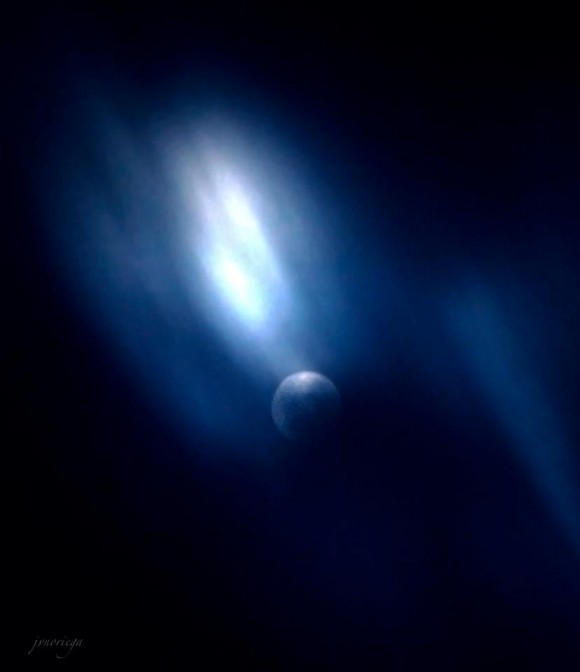2 amazing astronomical phenomena appeared in the week
This week, we will have the opportunity to admire two amazing astronomical phenomena: meteor shower and "blue moon".
Upcoming blue moon and meteor shower
On the last days of July, astronomers will have the opportunity to admire the amazing astronomical phenomenon - Delta Aquarids meteor shower and the "blue moon" phenomenon.
Specifically , on July 28 and 29 , we will be waiting for the Delta Aquarids meteor shower with a density of 20 tracks / hour and admire the phenomenon of "blue moon" on July 31st.
1. Delta Aquarids meteor shower with density of 20 tracks / hour
Delta Aquarids meteor shower will take place on July 28, 29. Delta Aquarids shooting stars are born from the remaining small dust of two Comets named Marsden and Kracht when approaching the Sun.
As the Earth passes, its gravitational pull pulls many small meteorites into the atmosphere and ignites, forming streaks of light called meteors.

Delta Aquarids will take place between 2am and before dawn. However, this meteor shower is considered not big, only reached 15-20 points / hour.
Meanwhile, the extreme time of the phenomenon falls on the night of the bright moon so the observation will become more difficult. To observe this phenomenon, the observer only needs to use the naked eye, without the aid of astronomical devices.
2. The phenomenon of "blue moon" but the moon is not green
Hearing the " blue moon ", many people mistakenly believe our Moon will be green. But the truth is, the Moon is still the same color, is it gray - white.

"Blue moon" is essentially the way people call themselves to show the full moon phenomenon twice in a month, usually every month the moon is only once.
We know that, usually, each year there are 12 full moon periods corresponding to 12 months. But because the Moon revolves around the Earth for 29.5 days, the solar calendar months have 30 or 31 days, so each calendar year is 11 days more than the lunar year.

So after about 2-3 years there will be a lunar year with 13 months, corresponding to 13 times of the full moon. And the second full moon in this calendar month is called the "blue moon".
According to the recorded images of NASA Agency for Aerospace and Aeronautics, the true color of the full moon surface for the second time of the month is gray - white.
People rarely see that the Moon is blue, however, sometimes, due to light refraction by the smoke and dust dispersed in the air, the Moon is light blue.

Photos of "blue moon" in Oman in August 2012.
In 1883, volcanic Krakatoa in Indonesia woke up, spraying ash into space and causing the Moon to be blue or green.
Krakatoa's dust ash makes dust particles about 1 micrometer in size covered with the cloud. They are tiny but enough to absorb red light rays and allow other colored light to pass through.
Therefore, the white light of the Moon when it passes through the clouds will be blue, sometimes green.

Besides, experts also said, the Moon is essentially round as many times as it goes to the symmetry point with the Sun, like all the 15th and 16th lunar nights we can observe.
In some areas, the air is polluted by emissions or volcanic eruptions - due to light refraction in the atmosphere, the Moon may also have blue light though not a circular phase.
After the phenomenon of "blue moon" takes place on July 31 to this, it is not until January and March 2018, we have the opportunity to admire this amazing astronomical phenomenon .
- 18 outstanding astronomical phenomena in 2014
- See Venus meet Jupiter at dawn
- Amazing astronomical phenomena should not be missed in March 2017
- See the amazing astronomical phenomena of 2013
- 12 amazing astronomical phenomena cannot be missed in 2016
- Virtual astronomical phenomena in April
- The image of 'sounding' meditates in space
- Details of observable astronomical events from Vietnam in 2018
- Beautiful astronomical photos last week
- Astronomical phenomena worth watching in 2011
- Discover amazing snow ice phenomena
- Astronomical photos last week
 Van Allen's belt and evidence that the Apollo 11 mission to the Moon was myth
Van Allen's belt and evidence that the Apollo 11 mission to the Moon was myth The levels of civilization in the universe (Kardashev scale)
The levels of civilization in the universe (Kardashev scale) Today Mars, the sun and the Earth are aligned
Today Mars, the sun and the Earth are aligned The Amazon owner announced a secret plan to build a space base for thousands of people
The Amazon owner announced a secret plan to build a space base for thousands of people